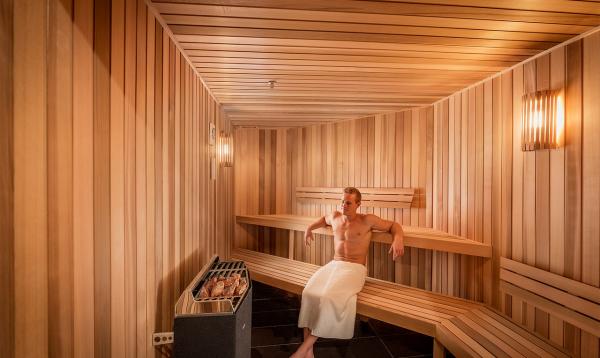Want to lower high blood pressure? Get yourself into a wooden box with high temperatures, and do it nearly every day for the best results.
That's the primary finding of a recent Scandinavian, follow-up, male-based study, which found that frequent – even daily – sauna bathing cuts the risk of elevated blood pressure nearly 50 percent, as compared to those who went just once a week.
The reasons for this, researchers from the University of Eastern Finland believe, is that exposure to saunas "may decrease systemic blood pressure through different biological mechanisms," they wrote in a statement. "During sauna bathing, the body temperature may rise up to 2 °C degrees, causing vessels vasodilation. Regular sauna bathing improves endothelial function, i.e. the function of the inside layer of blood vessels, which has beneficial effects on systemic blood pressure. Sweating, in turn, removes fluid from the body, which is a contributing factor to decreased blood pressure levels."
According to their paper, researchers studied more than 1,600 middle-aged men, from 42 to 60 years old who did not suffer from hypertension ("defined as a physician diagnosis of hypertension, systolic blood pressure (SBP) >140 mm Hg, diastolic blood pressure >90 mm Hg") and did not take antihypertensive drugs. The mean follow-up time was 22 years, with the high end being 26.9 years.
The men were divided into three groups, those who:
- visited a sauna once per week
- went 2-3 times per week
- took saunas 4-7 times per week
After the follow-up period, just over 15 percent of the participants were diagnosed with hypertension, but that risk was 24 percent less for those who saunaed 2-3 times/week and 46 percent lower for 4-7 times/week group.
Based on the results, researchers also postulate that using a sauna is "an activity that promotes relaxation and well-being." The temperature range was 80°C to 100°C.
In the study, which was published in the American Journal of Hypertension, the research team added that "the results were carefully adjusted for confounders in the association with hypertension, such as BMI, smoking, cardiorespiratory fitness, alcohol intake, and SES," the abbreviation for socioeconomic status, and the "majority of Finnish people use sauna regularly and access to sauna is not limited by socioeconomic background or other reasons."
A limitation of the study is that it only included men from Eastern Finland, therefore it's difficult to know whether the results carry over to all middle-aged men of other races and locations, as well as for women.
"Further studies are needed to confirm our results in different population settings, including women," the study concludes, "and among those who are not familiar to regular sauna bathing."




